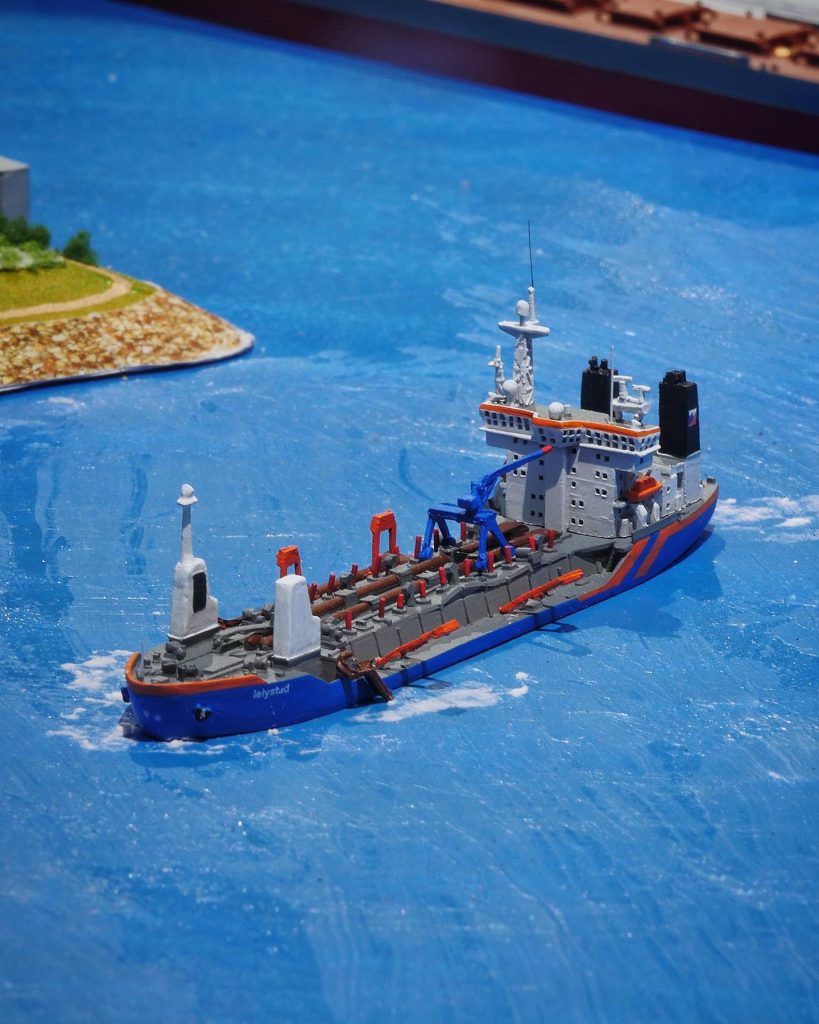
The dredger Leystad (1987). This little miniature is part of our extensive diorama of the Port of Hamburg in a scale of 1:1250 that is displayed on deck 9 of the museum.
This little miniature is part of our extensive diorama of the Port of Hamburg in a scale of 1:1250 that is displayed on deck 9 of the museum. It reproduces a vessel that is 137 meters long and 26,7 meters wide: the “Lelystad”.
The “Lelystad” was built at the IHC Merwede shipyard in the Netherlands in 1986. This vessel named after a Dutch city near Amsterdam, is a trailing suction hopper dredger. This kind of vessels are equipped with powerful pumps capable of sucking diverse types of sediment from the bed of the sea or a waterway. The sediment is stored aboard and can be unloaded elsewhere. It then can be used for many purposes.
Hopper dredgers are vital to remove sediments from waterways and maintain their depth. This keeps rivers, harbors, and canals navigable. Sometimes, the maritime industry needs to make waterways and harbors deeper, so larger vessels can navigate them. The sediments can also be used to win land from the sea or replace lost sand and gravel at a beach.
The “Lelystad” has been active for 33 years now and still operates internationally under the Dutch flag from its homeport Amsterdam. With a capacity to dredge down to 70 meters below the waterline, she can work on the open sea, which is necessary to keep the mouths of some larger navigable rivers accessible to ships with a deeper draft. Dredging, especially outside harbor areas, can have a very strong impact on the maritime and fluvial ecosystems and thus is a controversially discussed activity.
The navigability of the Port of Hamburg and the Elbe in general is constantly threatened by silting. Measures have already been taken in the past and there are further plans to deepen the Elbe so that larger ships can navigate it. This model in our diorama symbolizes this.
